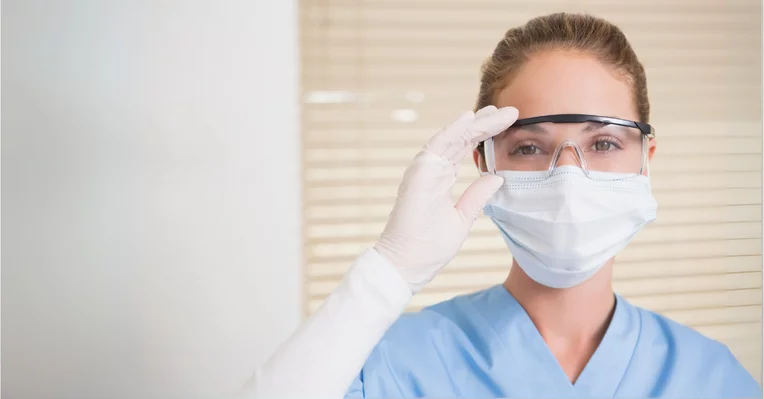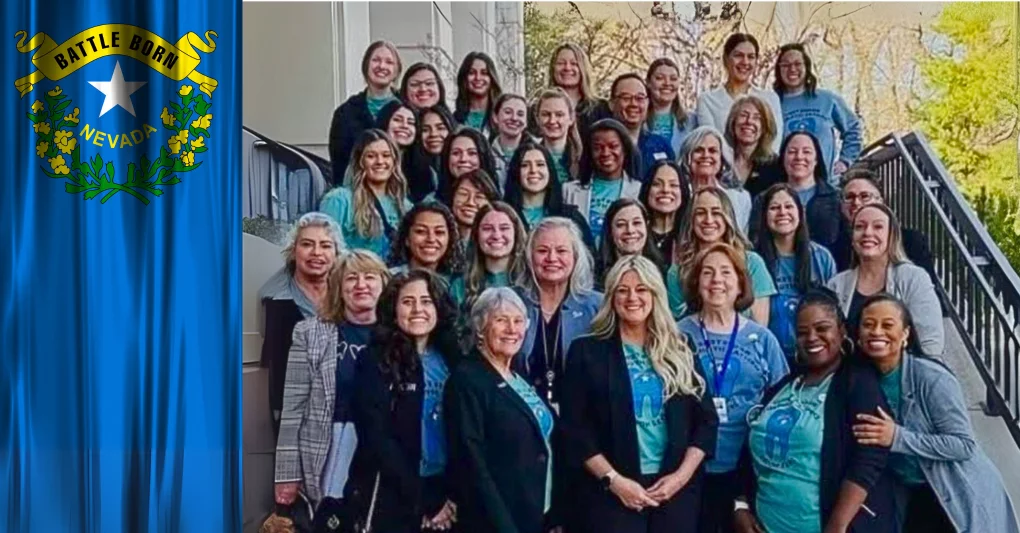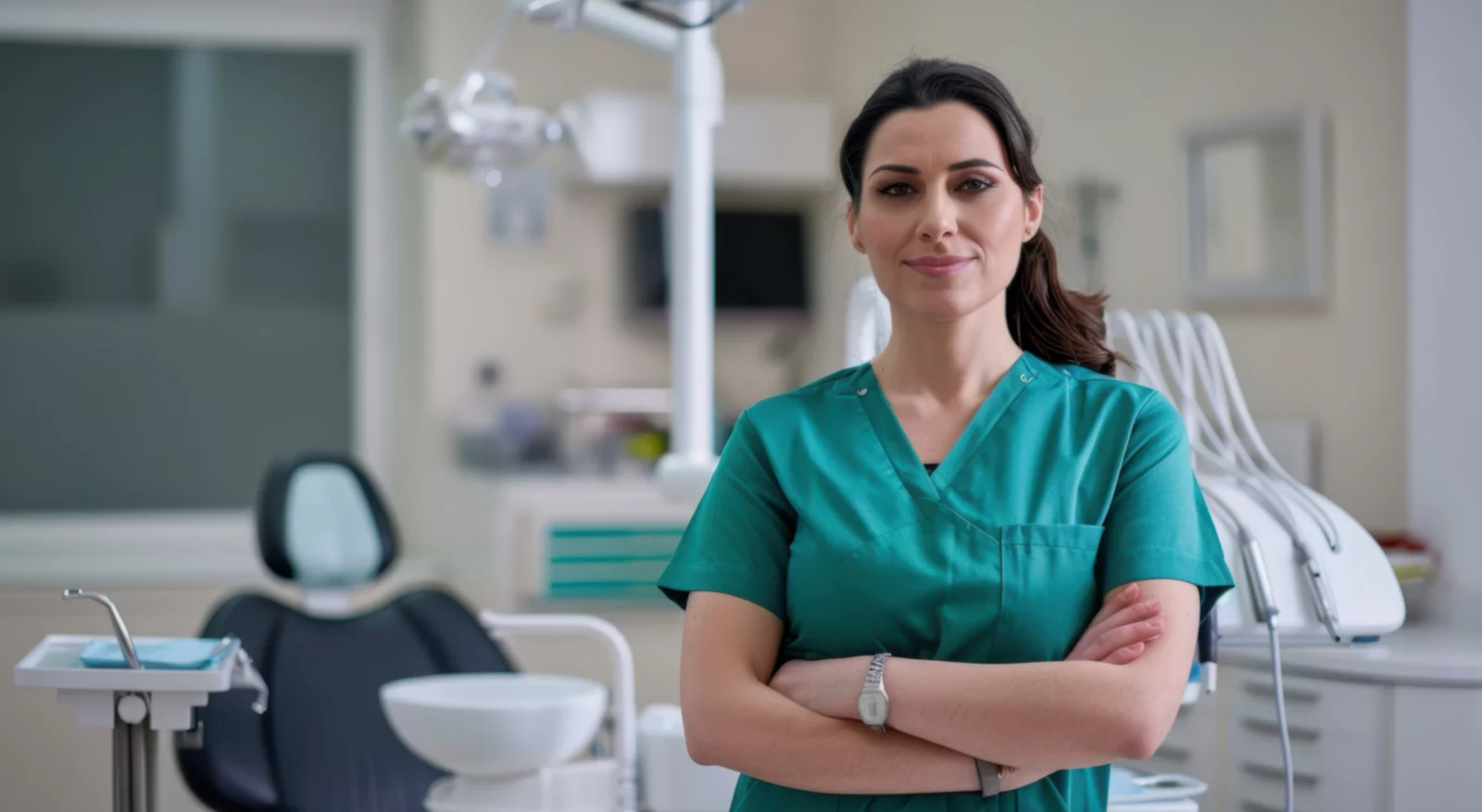By Katrina M. Sanders, RDH, BSDH, MEd, RF
June 17, 2025
There’s no easy way to say this — our profession is standing on a tectonic fault line.
On one side, states are rapidly rolling back the rigor of our licensure — stripping away clinical boards, greenlighting preceptorships in lieu of accredited education, and handing over once-protected and deeply coveted procedures to dental assistants like Halloween candy. On the other, dental hygienists are evolving into some of the most integrative, prevention-forward clinicians in modern healthcare.
So, who are we?
More importantly — who are we becoming?
This is the critical question we must confront as we chart the future of dental hygiene. And the answer isn’t just about preserving a job description — it’s about defending our vision. The vision of a healthcare professional who is educated, empowered, and essential.
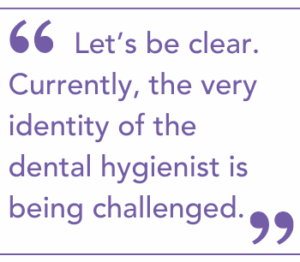
Let’s be clear. Currently, the very identity of the dental hygienist is being challenged. Not from within, but from the structural dismantling of what once made us distinct: rigorous education, national board examinations, and licensure grounded in clinical competency. When dental assistants are legally permitted to perform prophylaxis procedures in Arizona, deliver local anesthesia in Oregon, and proposed legislation in Nevada suggested sidestepping formal education entirely, we are no longer talking about evolution — we are talking about erasure.
But here’s the uncomfortable truth: protecting our scope by clinging only to what we’ve always done won’t save us. Instead, the future lies in expanding our scope with clarity, confidence, and an unapologetically bold vision.
It’s time to stop fighting for the past — and start building the framework for our bright future.
The Future is Not Chairside—It’s Everywhere.
Let’s imagine the next evolution of the dental hygienist not as a technician of calculus removal, but as a diagnostician of health risk. An advocate of change. A provider whose education in inflammation, microbiology, systemic disease, and behavior change is leveraged to its fullest extent — not just in dental practices, but in medical systems. Is there a possible future in which patients within the medical sector receive comprehensive care from a dental healthcare practitioner, such as:
- A high-risk pregnant patient with gestational diabetes receives nutritional and oral-systemic counseling from a dental hygienist embedded in her OB/GYN clinic – educating her on periodontal disease’s connection to preterm birth, screening for oral pathogens, and coaching her on inflammation-reducing habits that support a healthy pregnancy.
- A patient with cardiovascular disease meets regularly with a dental hygienist in a cardiology clinic to monitor salivary inflammatory markers and C-reactive protein levels, review diet and sleep hygiene, and help mitigate oral contributions to endothelial dysfunction.
- A dental hygienist collaborates within a diabetes care team, monitoring HbA1c results, evaluating oral manifestations of glycemic instability, and delivering critical education around how glycemic control directly impacts periodontal disease progression.
- In a high-risk geriatric care facility, a dental hygienist manages oral hygiene protocols for residents with dementia, screens for aspiration risk, and develops care plans that preserve dignity and comfort while preventing pneumonia.
- A dental hygienist works in a sleep medicine center, evaluating airway anatomy, screening for orofacial myofunctional disorders, and supporting patients undergoing oral appliance therapy for sleep-disordered breathing.
- Within a behavioral health setting, a dental hygienist supports patients recovering from eating disorders, tobacco and substance use, and mental health conditions; educating on oral-systemic consequences, monitoring for signs of oral trauma, and reestablishing trust in healthcare systems.
- Pediatric hygienists partner with school-based health programs in screening for airway dysfunction, coordinating myofunctional referrals, and coaching parents on creating caries-resistant environments at home.
- At a rural health clinic, a dental hygienist offers same-day salivary diagnostics and nutritional assessments for patients with limited access to traditional medical care, serving as the bridge between detection and medical intervention.
- Even in cancer care, a hygienist on the oncology team provides pre-chemotherapy oral assessments, manages mucositis protocols, and helps patients maintain oral health integrity throughout treatment.
This is no longer a pipe dream, as many of our colleagues have begun the rigorous process of paving pathways for patient experiences like these to become a common reality. The evidence is mounting, and the need is urgent.
Dental hygienists are not just “teeth cleaners.” We are licensed, educated health professionals with specialized training in the earliest signs of disease, risk-based prevention, patient communication, and interprofessional collaboration. We speak both dental and medical. We understand inflammation, pathology, immunity, and healing. And in a healthcare system desperate for preventive solutions and cost-effective strategies, we are exactly what the system is missing.
But First: We Must Reunite
Here is the challenge: we cannot get there unless we stop fighting amongst ourselves. Too often, our profession eats its own. Those of us who endured the rigor of education and licensure are understandably angry when others are handed privileges so many of us bled for. But we cannot 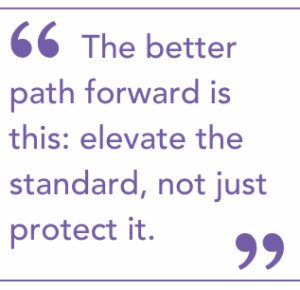 defend our value with gatekeeping alone. The better path forward is this: elevate the standard, not just protect it. Invest in raising the bar — not lowering it for convenience or cost-cutting.
defend our value with gatekeeping alone. The better path forward is this: elevate the standard, not just protect it. Invest in raising the bar — not lowering it for convenience or cost-cutting.
Let’s advocate for tiered licensure that adds responsibility with added training. Let’s demand clinical board reform that reflects real-world practice without removing the need to prove competency. Let’s reimagine our education pipeline so it’s accessible and equitable without diluting the integrity of our expertise.
Because in the future, dental hygienists won’t just be clinicians — we’ll be connectors. Of oral and systemic health. Of dental and medical integration. Of prevention and intervention modalities. We will work and thrive in hospitals, clinics, schools, telehealth platforms, and beyond.
We will be the boots on the ground in public health crises, the sharpest minds in wellness strategy meetings, and the loudest voices advocating for patient-centered, prevention-forward care.
Finding Our Rightful Place
The path ahead is uncertain. The profession may feel fragmented. But disruption creates opportunity — and what we do next will define our legacy.
Are we just fighting to stay in the operatory?
Or are we ready to claim our rightful place in the health care continuum?
I believe the latter. The world is changing, and the dental hygienists of the future are not afraid of that change — they are leading it.
____________________________________

Katrina Sanders, RDH, BSDH, M.Ed, RFRDH is a clinical dental hygienist, author, international speaker and proud ADHA member. Katrina is passionate about elevating the dental profession by creating an undeniable movement that educates, encourages, and empowers the profession to rise in its power. Known as the “Dental WINEgenist™,” she pairs her desire for excellence in the dental industry with her knowledge and passion for wine. She is the Clinical Liaison for Hygiene Excellence at AZPerio, founder of Sanders Board Preparatory and is frequently published across various dental hygiene publications. Recently, Katrina proudly received the University of Minnesota Distinguished Alumni Award and the 2024 Sunstar Award of Distinction. Learn more about Katrina at katrinasanders.com and follow her on social channels @TheDentalWINEgenist.
